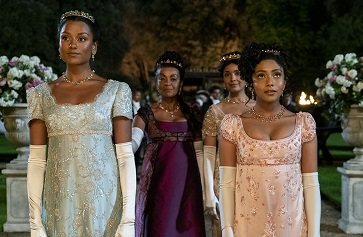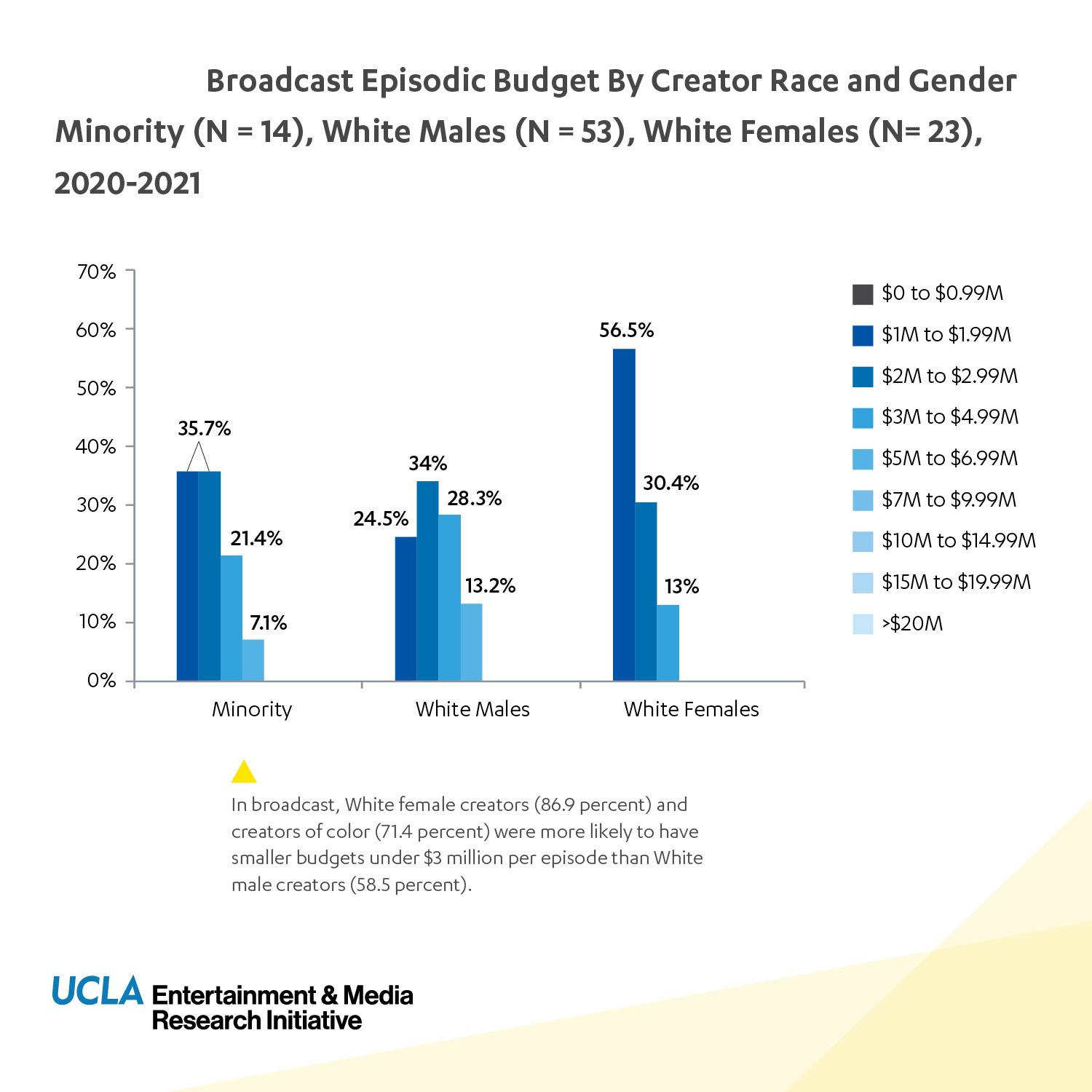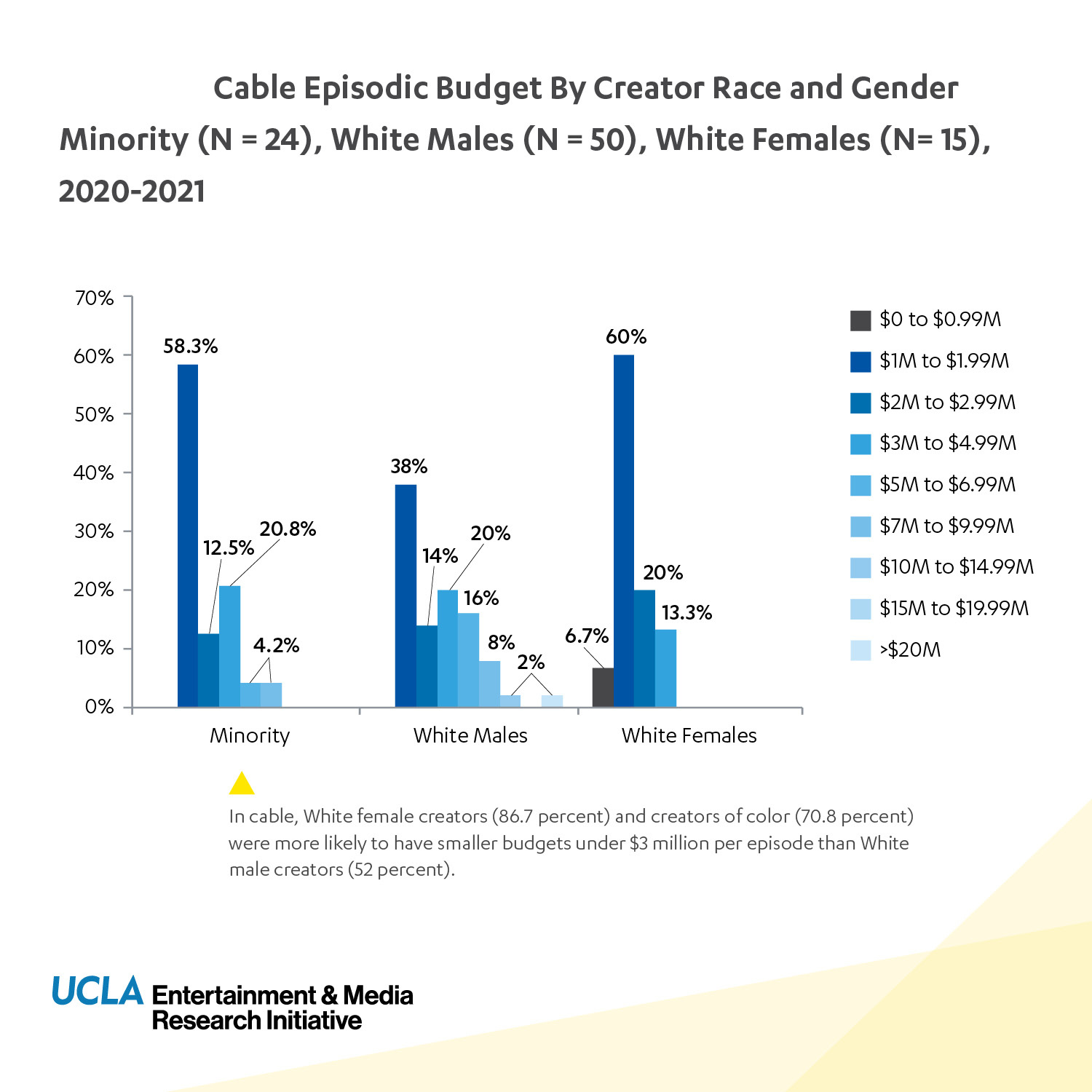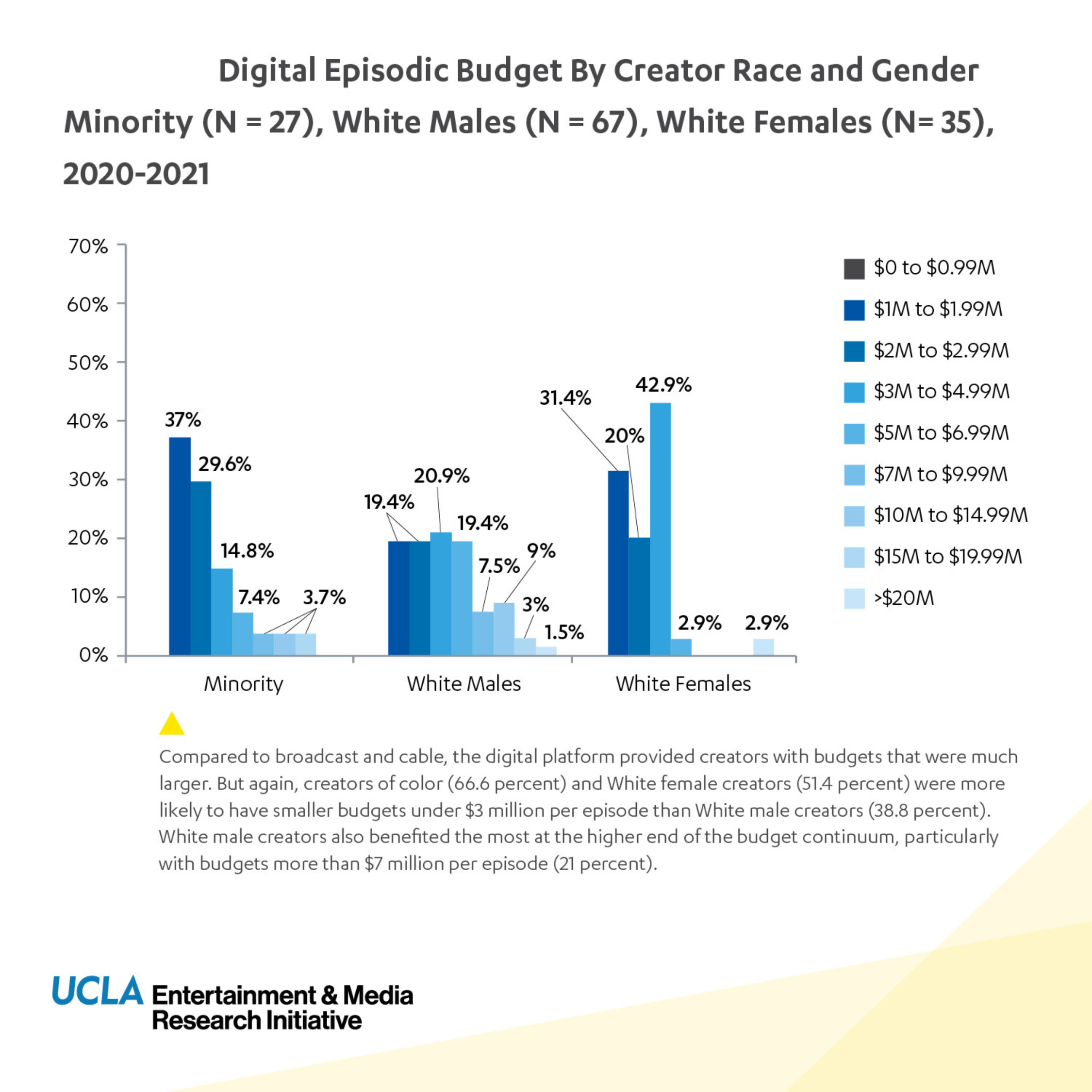Women and people of color still less likely to helm big-budget TV shows
Latest Hollywood Diversity Report from UCLA signals potential challenges ahead in writers’ rooms
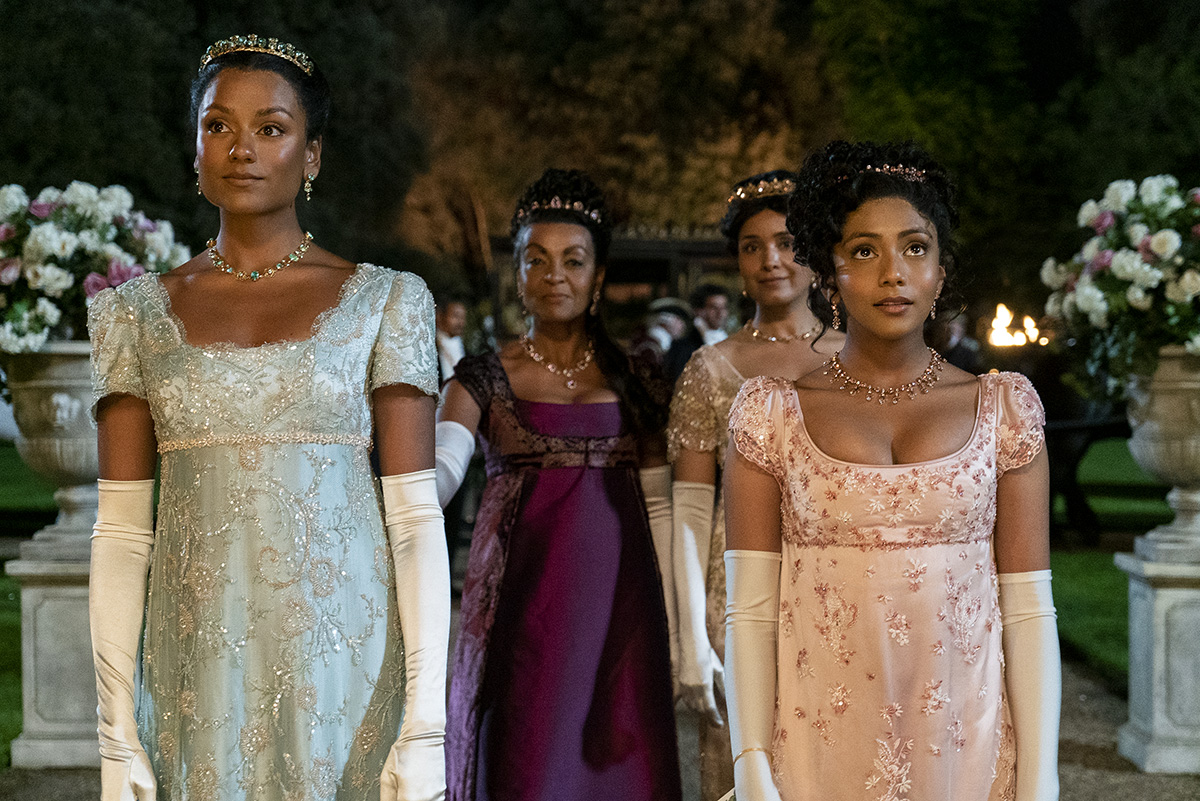
Netflix’s period romance “Bridgerton” enjoyed broad appeal among Asian, Black, Latino and white households in 2020–21; it also generated plenty of buzz on Instagram and Twitter. | Image credit: Netflix
Jessica Wolf | October 27, 2022
UCLA researchers see signs that could foretell a retreat in the industry’s gender and racial diversity — especially on big-budget shows and in writing positions.
That’s among the conclusions of a study of the 2020–21 TV season in the new Hollywood Diversity Report, which is produced by the Entertainment and Media Research Initiative at UCLA.
“The next few years may be a true test of whether Hollywood is truly committed to the changes they promised during the nation’s reckoning on race following the murder of George Floyd,” said Ana-Christina Ramón, director of the initiative.
The report did also find that shows with diverse casts — such as “FBI” on CBS, “Snowpiercer” on TNT and “Bridgerton” on Netflix — continued to draw large, diverse audiences.
But with programmers increasingly shelling out big bucks for high-concept shows, the UCLA report reveals that those opportunities weren’t equal for women and people of color — despite the fact there were more minority and women show creators across all distribution platforms than there were during the 2019–20 season.
“We saw an uptick in opportunity for people of color and women having their shows greenlit, which should be a marker of progress,” Ramón said. “However, when we examined the episodic budgets of all the TV series, we see a strong pattern indicating that shows created by people of color and women tended to receive smaller budgets than those created by white men, particularly in the digital arena.”
Nearly 1 in 2 shows for which white men were credited as show creators enjoyed a budget of more than $3 million per episode, but far fewer women or people of color reached that level.
In broadcast, 71.4% of show creators of color (both men and women) had per-episode budgets of less than $3 million; among white women creators, 86.9% did so; and among white men, just 58.5% worked with less than $3 million per-episode budgets. The discrepancies were similar for streaming and cable series.
Netflix’s “The Crown” and other high-profile projects continued to make streaming services the industry’s biggest-budget playground. There, too, white men show creators received the biggest sums for their projects.
Among streaming series, 21% of those created by white men enjoyed per-episode budgets of $7 million or more. Just 11.1% of streaming shows created by people of color had budgets in that range, and only 2.9% of shows created by white women did. (Disney+’s “WandaVision” was the lone member of that group.)
Overall, in the digital arena, a plurality of white women (42.9%) show creators had budgets between $3 million and $4.99 million; among people of color, the greatest number of show creators (66.6%) had budgets below $3 million per episode.
The report also tracks the gender and racial profile for those who held key jobs for 107 broadcast, 109 cable and 191 digital scripted shows from the 2020–21 season. Women made up 31.8% of show creators in broadcast, 31.2% in cable and 36.1% in digital. People of color held 13.1% percent of those roles in broadcast, 26.6% in cable, and 25.6% in digital. All six of those figures were improvements over the prior year, but they still fall short of proportionate representation for either group.
Darnell Hunt, UCLA’s executive vice chancellor and provost, and co-founder of the Hollywood Diversity Report, said there are ominous signs for the future of the industry’s diversity efforts.
“Diversity initiatives traditionally are the first to be sacrificed when there are economic downturns,” Hunt said. “We’re already seeing it start with cutbacks at Warner and HBO. But rolling back efforts before equity has been truly achieved for women and people of color would be a major miscalculation.
“Any cost-savings studios realize now will come at the expense of alienating increasingly diverse viewers who expect increased representation in their TV shows, and do not make good business sense in the long term.”
Over the course of 11 TV seasons, the report has repeatedly drawn correlations between shows’ ratings and the diversity of their casts and writers. For example, ratings in 2020–21 were highest for cable scripted shows with casts made up of at least 41% minority actors. In digital, ratings were highest for shows with casts that were 21% to 30% minorities.
Representation in writers’ rooms for both women and people of color improved in 2020–21. Women made up about 45% of writers, and minorities made up more than 30% of writers, both small increases from previous TV seasons.
But that progress could be tenuous given the TV industry’s continued shift to releasing more content on digital platforms, which typically have shorter seasons — and therefore fewer slots for all writers.
“Like other industry watchers, we are closely monitoring these trends and exploring what impact they might have on opportunities for women and people of color to tell authentic stories,” said Michael Tran, a UCLA graduate student studying sociology and a co-author of the report. “The racial and gender dynamics in a collaborative writers’ room have an enormous impact on the types of stories that are told.”
The Hollywood Diversity Report uses independently gathered information about the race, ethnicity and gender identity of actors, writers, directors and show creators. The Entertainment and Media Research Initiative, which was formed in September, is under the auspices of the UCLA Institute for Research on Labor and Employment. The initiative will expand UCLA’s study of the entertainment industry to explore equity and access issues affecting industry workers with other underrepresented identities — based on their disability status, sexual orientation and religion, and how those identities intersect with race, ethnicity and gender.
“With a continued focus on workers’ rights, we are currently working with partners to examine ways to gather information and uncover the experiences of those from other underrepresented communities that are often overlooked,” Ramón said.
Other findings from the new report:
• Diversity of TV casts continued to improve, extending a longstanding trend. In the 2020–21 season, 34.9% of broadcast, 35.8% of cable and 30.7% of digital featured majority-minority casts.
• Women were well represented in lead acting roles on scripted shows on cable, as well as on digital platforms.
• Actors of color were underrepresented in lead roles on broadcast TV (just 27.4%), but were nearly proportionally represented — relative to the U.S. population overall — in lead roles on cable (39.6%) and digital (37.6%).
• Women of color made gains as writers for broadcast shows, holding 17.8% in 2020-21, up from 13.6% in 2019-20.
• A higher percentage of TV directors were women of color than in the previous year, across all three platform types.
• Social media engagement was highest for digital shows that had diverse casts. Netflix’s “The Chair,” Disney+’s “Loki” and “The Falcon and the Winter Soldier, Netflix’s “Bridgerton,” Hulu’s “The Handmaid’s Tale” and HBO Max’s “Hacks” all generated major buzz on Instagram and Twitter.
• Transgender and nonbinary actors had nominal representation. The report tracked five transgender and two nonbinary actors in broadcast shows; three transgender and five nonbinary actors among cable TV casts. In digital, just one transgender and seven nonbinary actors appeared across all shows tracked.
Budget per episode of digital TV programs, segmented by race and gender of show creator; click each image for full description and download:
This article originally appeared in the UCLA Newsroom. For more news and updates from the UCLA College, visit college.ucla.edu/news.


